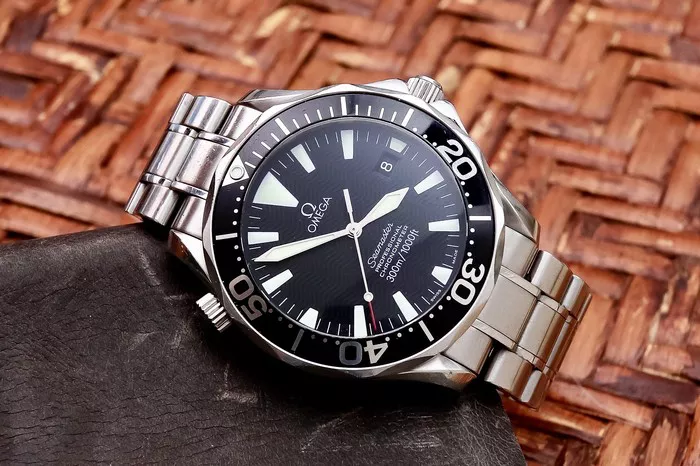Omega is a renowned luxury watch brand that has been captivating timepiece enthusiasts since its inception in 1848. Over the years, Omega has built a strong reputation for its precision, innovation, and iconic designs. As a result, many individuals have become curious about the ownership of this esteemed watch brand. In this article, we will delve into the history of Omega and explore its current ownership.
A Brief History of Omega:
The roots of Omega can be traced back to 1848 when a young watchmaker named Louis Brandt started a small workshop in La Chaux-de-Fonds, Switzerland. Brandt’s dedication to quality craftsmanship and attention to detail quickly earned him a reputation for producing exceptional timepieces.
In 1894, Louis Brandt’s sons, Louis-Paul and César, introduced a groundbreaking movement known as the Omega caliber. This movement gained popularity for its precision and reliability, leading the Brandt brothers to adopt “Omega” as the name for their watches.
Omega continued to innovate in the following decades, becoming a pioneer in various areas of watchmaking. Notably, the brand played a significant role in maritime exploration and sports timing, being chosen as the official timekeeper for multiple Olympic Games.
The Swatch Group:
In 1983, Omega became a part of the Swatch Group, a Swiss conglomerate that specializes in the manufacturing and distribution of watches and jewelry. The Swatch Group, formerly known as Société Suisse de Microélectronique et d’Horlogerie (SMH), was established in 1983 through the merger of two Swiss watch companies, ASUAG and SSIH.
The Swatch Group, under the leadership of Nicolas G. Hayek, recognized the value and heritage of Omega and acquired the brand. Hayek, a visionary entrepreneur, revitalized the Swiss watch industry during the 1980s and played a pivotal role in saving many traditional Swiss watchmaking companies from the crisis caused by the rise of quartz watches.
Today, the Swatch Group is one of the largest watch conglomerates globally, boasting an extensive portfolio of watch brands ranging from entry-level timepieces to luxury and haute horlogerie. The group owns several prestigious brands, including Omega, Breguet, Blancpain, Longines, Tissot, and many others.
Omega’s Autonomy within the Swatch Group:
Despite being a part of the Swatch Group, Omega has maintained a significant level of autonomy in its operations and brand management. The Swatch Group recognizes the individuality and unique position of Omega within the luxury watch segment and has allowed the brand to retain its distinct identity.
Omega benefits from the synergies and resources of the Swatch Group, including access to cutting-edge technology, research and development, and global distribution networks. At the same time, the brand has its dedicated design and manufacturing facilities, ensuring the quality and craftsmanship that Omega is renowned for.
In-House Movements and Technological Advancements:
One of the key strengths of Omega is its ability to develop and produce in-house movements, which are the engines that power the watches. The brand’s commitment to horological excellence is exemplified by its Co-Axial escapement, a patented technology that improves accuracy and reduces friction within the movement.
Omega has made significant advancements in the field of mechanical watchmaking, pushing the boundaries of precision and performance. The brand’s Master Chronometer certification, introduced in collaboration with the Swiss Federal Institute of Metrology (METAS), guarantees exceptional accuracy, magnetic resistance, and overall reliability.
These technological achievements, combined with Omega’s rich heritage and iconic designs, have contributed to the brand’s enduring appeal among watch enthusiasts and collectors worldwide.
Omega’s Role in Space Exploration:
Omega’s association with space exploration is another aspect that sets the brand apart. In 1965, NASA officially selected Omega as the watch worn by its astronauts during space missions. The Speedmaster Professional Chronograph, commonly known as the “Moonwatch,” became an integral part of space history when it accompanied the Apollo 11 mission to the moon in 1969.
The Moonwatch’s reliability and performance in extreme conditions, including zero gravity and extreme temperatures, solidified Omega’s reputation as a trusted timekeeping companion in space. To this day, the Speedmaster remains the only watch certified for EVA (extravehicular activity) use by NASA.
Celebrity Endorsements and Brand Ambassadors:
Omega’s popularity extends beyond the world of horology, with numerous celebrities and athletes endorsing the brand. These brand ambassadors serve as influential figures, promoting Omega’s values and representing the brand’s commitment to excellence.
Notable Omega ambassadors include renowned actors such as George Clooney and Daniel Craig, who have portrayed the iconic character James Bond in various films. Additionally, prominent athletes like Michael Phelps and Rory McIlroy have been associated with the brand, emphasizing its connection to precision, performance, and achievement.
Conclusion:
In conclusion, Omega, a brand revered for its precision, innovation, and timeless designs, is currently owned by the Swatch Group. Since its acquisition in 1983, Omega has flourished under the stewardship of the Swatch Group, maintaining its autonomy while benefiting from the group’s resources and support.
The Swatch Group’s recognition of Omega’s unique position in the luxury watch segment has allowed the brand to continue pushing the boundaries of horological excellence. With a focus on in-house movements, technological advancements, and its rich heritage, Omega remains a beacon of quality and craftsmanship.
Furthermore, Omega’s association with space exploration and its endorsements by celebrities and athletes have further elevated its brand image and global recognition. As the years go by, Omega continues to captivate watch enthusiasts and collectors alike, solidifying its position as one of the world’s most esteemed watch brands.

